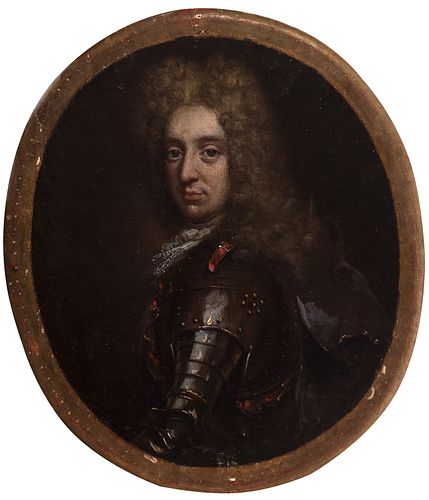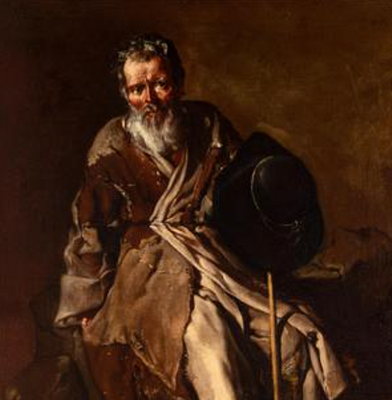Painter of the court of Felipe V; circa 1770. "Portrait Duque Fernán Núñez". Oil on canvas glued to panel. It presents a mediator framework from the 1
Lot 25
About Seller
Setdart Auction House
Carrer Aragó 346
Barcelona
Spain
Setdart Subastas was born in 2004 and is currently the first online art auction in Spain with solidity, prestige and reliability guaranteed by our more than 60,000 users. Setdart has a young, dynamic and enterprising team ready to successfully manage the purchase and sale of art works through custom...Read more
Estimate:
EUR€5,000 - EUR€6,000
$5,376.34 - $6,451.61
Absentee vs Live bid
Two ways to bid:
- Leave a max absentee bid and the platform will bid on your behalf up to your maximum bid during the live auction.
- Bid live during the auction and your bids will be submitted real-time to the auctioneer.
Bid Increments
| Price | Bid Increment |
|---|---|
| EUR€0 | EUR€10 |
| EUR€200 | EUR€25 |
| EUR€500 | EUR€50 |
| EUR€1,000 | EUR€100 |
| EUR€3,000 | EUR€200 |
| EUR€5,000 | EUR€500 |
| EUR€10,000 | EUR€1,000 |
| EUR€20,000 | EUR€2,000 |
| EUR€50,000 | EUR€5,000 |
About Auction
By Setdart Auction House
Jun 1, 2021
Set Reminder
2021-06-01 09:45:00
2021-06-01 09:45:00
America/New_York
Bidsquare
Bidsquare : OLD MASTERS & SCULPTURE - Day 2
https://www.bidsquare.com/auctions/setdart-auction-house/old-masters-sculpture---day-2-6999
Setdart Auction House sofia@setdart.com
Setdart Auction House sofia@setdart.com
- Lot Description
Painter of the court of Felipe V; circa 1770. "Portrait Duque Fernán Núñez". Oil on canvas glued to panel. It presents a mediator framework from the 19th century. Measures: 36 x 31 cm; 65 x 55 cm (frame). In profile, although with his face turned, the protagonist of this work looks directly at the viewer in a resounding, authoritative and sober manner, but not with disdain. His attitude, which is defined by his pose, his gesture, and his shining armor, make us understand that the portrayed is a character of high social status, who enjoys the recognition and admiration of his class. Due to the writings found on the back of the work, it is probable that this work reflects José Diego Gutiérrez de los Ríos y Zapata, V Duke of Ferrán Núñez. The Duke was born in Madrid, in 1681, and entered the Royal Navy of the Ocean, where he served for a long time, under the orders of his own father, the third Count Francisco de los Ríos. After a prolific career in the navy, in 1725 he was appointed Captain General of the Royal Galleys of Spain, replacing his brother. The galleys gradually disappeared from the seas, and his flagship galleon was the last to enter the Port of Santa María to be scrapped. For this reason, the V Count of Fernán Núñez is known as the last General of the Galleys of Spain. Due to the aesthetics of the character, where the wide wig stands out, and to the aesthetic conception of the portrait, it is worth mentioning that a theatrical and ostentatious intention of the representation of the protagonist prevails, as it can be seen in other portraits of the time, such as the one of the Monarch Philip V, painted by Jean Ranc, which is in the Prado Museum. It is interesting to note the type of painting that developed during the reign of Philip V, who upon his arrival to the tone, decided to introduce new aesthetic models, which meant a great change in the royal collection. The collection was nourished by works that belonged to artists of a marked classicism, such as Poussin, the Carracci or Carlo Maratta, in addition the themes were expanded, acquiring landscape scenes, which included a taste for the views of the royal sites, and images of a certain costumbrista character. In the 18th century, the panorama of European portraiture was varied and broad, with numerous influences and largely determined by the taste of both the clientele and the painter himself. However, in this century a new concept of portraiture was born, which would evolve throughout the century and unify all the national schools: the desire to capture the personality of the human being and his character, beyond his external reality and his social rank, in his effigy. During the previous century, portraiture had become consolidated among the upper classes, and was no longer reserved only for the court. For this reason, the formulas of the genre, as the 17th century progressed and even more so in the 18th century, became more relaxed and moved away from the ostentatious and symbolic official representations typical of the Baroque apparatus. On the other hand, the eighteenth century will react against the rigid etiquette of the previous century with a more human and individual conception of life, and this will be reflected in all areas, from the furniture that becomes smaller and more comfortable, replacing the large gilded and carved furniture, to the portrait itself, which will come to dispense, as we see here, of any symbolic or scenographic element to capture the individual instead of the character.
- Shipping Info
-
In-house shipping available. Please inquire at admin@setdart.com.
-
- Buyer's Premium



 EUR
EUR CAD
CAD AUD
AUD GBP
GBP MXN
MXN HKD
HKD CNY
CNY MYR
MYR SEK
SEK SGD
SGD CHF
CHF THB
THB

















